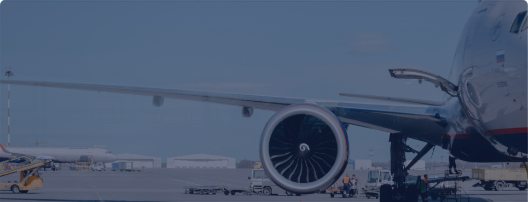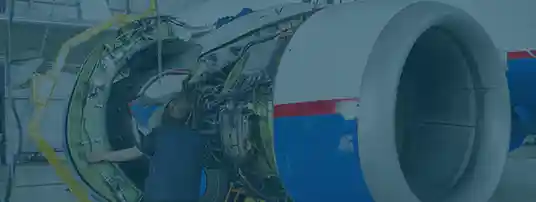How Are Composite Materials Changing Civil Aircraft Component Design
Composite materials have become central to modern aircraft design because they can deliver strength, durability, and structural efficiency at levels that metals alone cannot reliably achieve. To support diverse aerospace applications, these materials are engineered with various fiber orientations and resin systems that are tailored to balance a high load-bearing capacity with long-term reliability. In this blog, we will delve into various advantages composites bring to aircraft design, notable components where they are most widely applied, and critical engineering challenges that accompany their use.
What Advantages Do Composite Materials Offer in Aircraft Design?
As mentioned earlier, composite materials provide engineers with opportunities to improve airframe performance in ways that extend beyond the limits of conventional alloys. Their engineered properties support several advantages that directly influence operational efficiency and long-term reliability, including:
-
Weight Reduction: Composite structures are significantly lighter than many metallic equivalents, allowing aircraft to achieve lower fuel burn, extended range, and greater payload capacity without sacrificing safety margins.
-
Durability: High fatigue resistance enables many composites to withstand thousands of pressurization cycles without cracking or deforming, helping aircraft retain structural integrity through years of service.
-
Corrosion Resistance: Unlike aluminum or steel, composites do not readily corrode when exposed to moisture, de-icing agents, or industrial chemicals, reducing the frequency of reapplying protective coatings, carrying out inspections, and conducting replacements.
-
Structural Flexibility: Engineers can orient fibers and laminate layers in controlled directions, producing localized stiffness or flexibility that is customized to the aerodynamic loads and structural demands present in specific parts of an airframe.
-
Energy Efficiency: By lowering overall aircraft mass, composites can reduce fuel consumption and environmental emissions while simultaneously decreasing lifecycle operating costs.
How Are Composite Materials Applied Across Aircraft Components?
In modern aircraft, composites are selectively applied to areas where their performance advantages most directly enhance efficiency, strength, or safety. These applications span both major load-bearing structures and supporting assemblies, such as:
-
Fuselage Panels: Carbon fiber composites are used to form lightweight skins that preserve pressurization integrity, improve damage tolerance, and reduce structural weight to enhance overall efficiency.
-
Wing Structures: Advanced composite lay-ups allow designers to build longer, thinner wings with higher aspect ratios, increasing aerodynamic lift, reducing drag, and enabling more fuel-efficient cruise performance.
-
Control Surfaces: Elevators, ailerons, and rudders often incorporate composites to deliver precise aerodynamic responsiveness while reducing the mass that actuators need to control.
-
Cabin Interiors: Reinforced plastics and laminates can provide fire resistance, vibration dampening, and acoustic insulation in addition to design flexibility, all while minimizing cabin weight to support a greater fuel economy.
-
Engine Nacelles: Composite nacelles and cowlings can reduce noise, withstand thermal exposure, and lower drag, making them essential to propulsion system efficiency.
What Design Challenges Do Composites Present in Aerospace Engineering?
While composites offer broad benefits, they also introduce unique challenges that complicate aircraft design, manufacturing, and certification. These issues often determine how extensively composites are adopted in aerospace programs.
-
Manufacturing Complexity: Composite parts often require autoclave curing, vacuum processes, and stringent quality-control procedures to be properly manufactured, which can lengthen production timelines and increase costs when compared to metallic fabrication.
-
Repair Limitations: Unlike metallic structures, composites cannot be reshaped or welded, with repairs frequently demanding specialized bonding procedures, advanced diagnostic equipment, and trained personnel.
-
Cost Factors: Raw material expenses for carbon fibers and high-performance resins, combined with typical processing requirements, can substantially increase overall production and maintenance costs for composite-intensive aircraft.
-
Environmental Sensitivity: Without protective coatings, composites may absorb moisture or degrade under UV radiation and temperature cycling, leading operators to adopt specialized maintenance procedures and monitoring schedules.
-
Certification Requirements: Because composites behave differently under stress and fatigue compared to metals, regulators impose extensive testing and validation, which can extend development schedules.
Peruse Our Stock of Composite Materials Today
Owned and operated by ASAP Semiconductor, Aviation Sourcing Solutions is a one-stop shop where you can access a vast selection of dependable composite materials that find use in various aircraft applications. With a steadfast dedication to customer satisfaction, those who place orders on our platform can expect competitive pricing and on-time delivery when they choose us for their project requirements. Bearing our commitments in mind, explore our database at your convenience to discover why a growing number of professionals consistently select our website as their preferred purchasing hub.

 The only independent
The only independent


